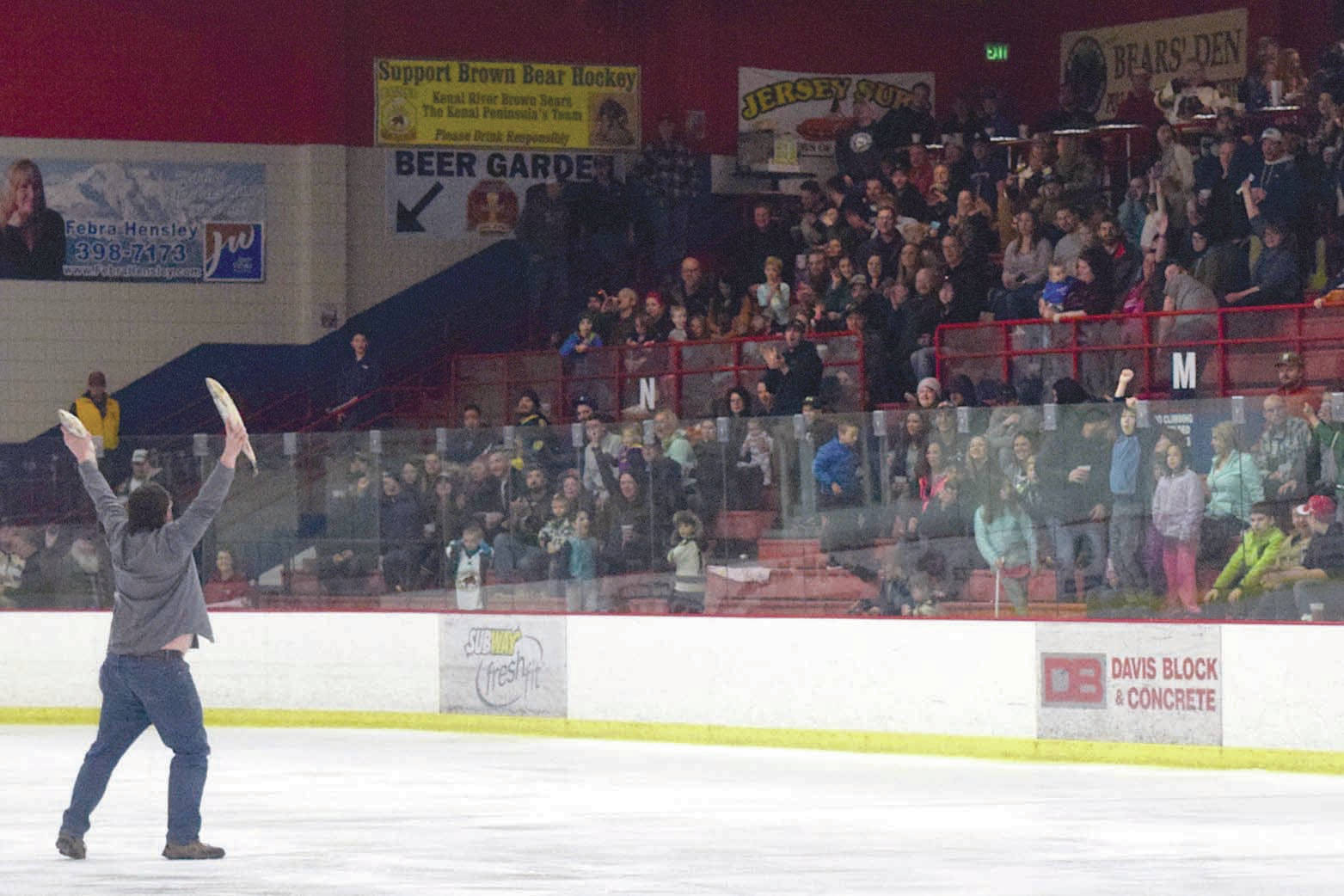A spectator cap, closed locker rooms and shuttered water fountains are among the changes visitors can expect to see in the Soldotna Regional Sports Complex when it welcomes patrons on Sept. 28.
Soldotna Parks and Recreation Director Andrew Carmichael and Soldotna City Manager Stephanie Queen presented the facility’s COVID-19 mitigation plan to the Soldotna City Council on Wednesday, which outlines the specific steps being taken to help prevent the spread of COVID-19 in the building and sets limits on the number of people allowed to participate in various ice activities.
Other changes include a one-way route used to enter and leave the rink and temporary restrictions on the amount of time people can spend in communal areas before and after their ice time.
For the first two weeks of the facility being open, the amount of time between skating sessions will be increased from 15 minutes to 30 minutes, during which areas shared by groups will be disinfected. Rink users can only arrive at the facility 15 minutes before their scheduled ice time and must leave within 15 minutes after their ice time ends. Carmichael said they plan to identify kinks in the new protocols during the first two weeks the time limit is in place, and will hopefully return to 15-minute buffers at the end of the two weeks.
People using the ice will be told to arrive at the facility dressed except for skates, which they will be allowed to put on once inside. Additional clocks will be placed around the facility to help patrons keep track of the 15 minutes.
A one-way rink access route will also be used. According to Carmichael, players will enter through the main doors where they will be “funnelled” by curtains to the back team room hall. Once there, they will be able to put on their skates in chairs spaced 6 feet apart before entering the rink. Once players are on the ice, a fogging disinfection machine will be used to sanitize the back hall. When leaving the ice, players will exit through the front lobby where they will be able to take off their skates, again in chairs 6 feet apart.
Communal spaces and bathrooms will be touch-point disinfected every two hours, hand-sanitizing stations will be added to high-traffic areas and staff will wear face masks. The building will also be cleaned following CDC guidelines each business day.
Registration and payments will be conducted using credit cards only and skate rentals will be provided through a shield, with skates disinfected between each use.
While the council agreed that the plan looked thorough, several members raised concern about its 40-spectator limit. One member who voiced their concern about the cap was Pamela Parker, who said it may cause backlash from the community.
“I think it’s going to be really challenging to tell families they can’t come and watch and support their kiddos,” Parker said.
Carmichael said that when it comes to determining how many people to allow into the facility, there isn’t an easy answer.
“I can’t use a mean, median or a mode score to identify how many people I should put in the building for our facility with so many nuances … because I don’t have a metric to do that with,” Carmichael said. “It’s about a comfort level and about a perception.”
There was some disagreement about how stringent mask rules should be within the facility.
Jordan Chilson said he didn’t know if strongly encouraging people in the facilities to wear masks would be enough, saying that he’s been in places where people did not wear masks despite them being recommended.

